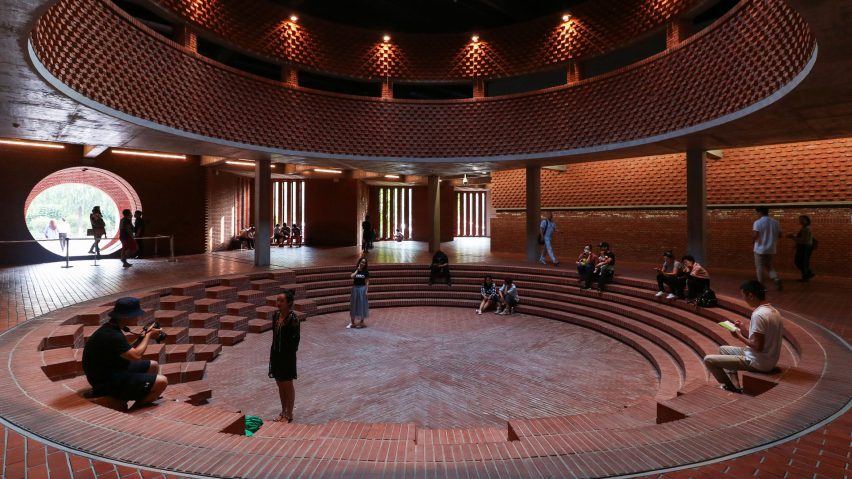
Dong Yugan uses brick to form sculptural surfaces and playful structures at Red Brick Art Museum
This museum in Beijing takes its name from the red brick used by architect Dong Yugan to create spaces that are dramatically illuminated by skylights, perforations and narrow windows incorporated into its homogenous masonry surfaces.
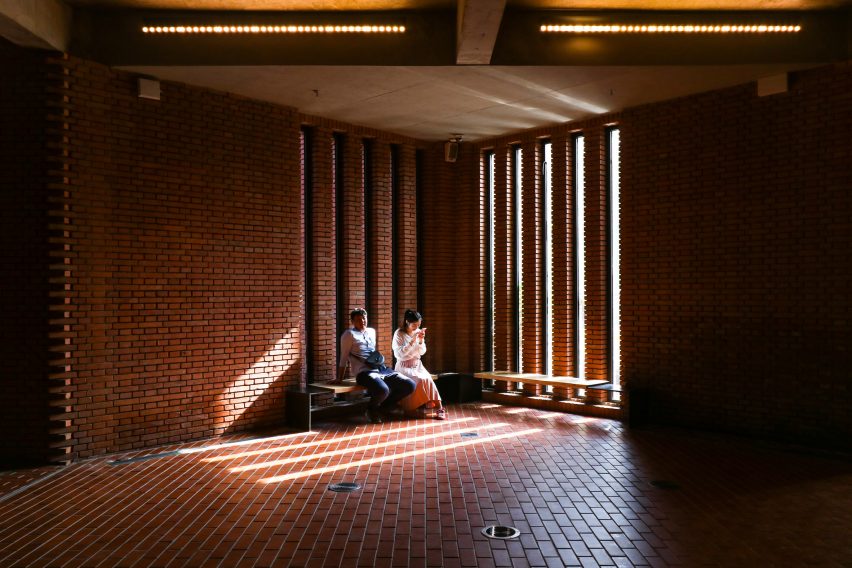
Red Brick Art Museum is a folk-based, non-profit art museum showcasing Chinese and world art, which was founded by collectors Yan Shijie and Cao Mei, and opened in 2014.
The museum is located in the Chinese capital's Chaoyang district, northeast of the city centre. It covers a total area of 20,000 square metres, with almost 10,000 square metres of exhibition space.
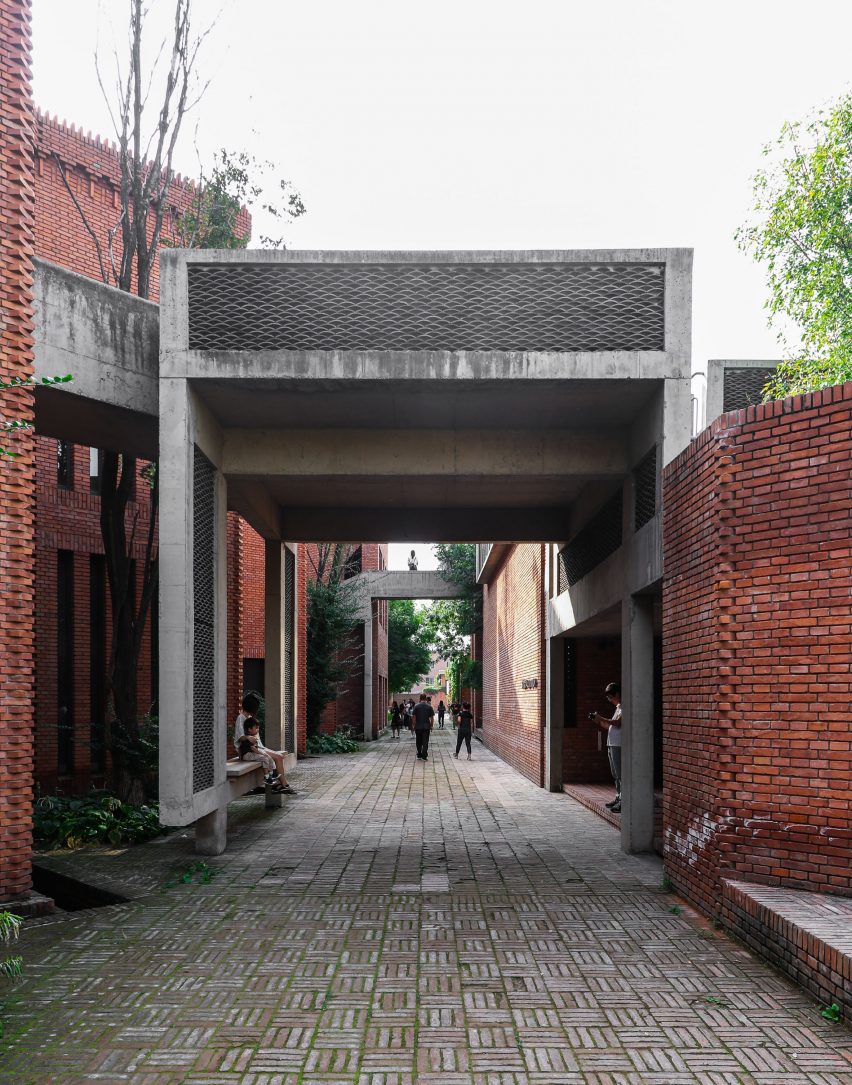
Architect Dong Yugan, who is a professor at Peking University's Architecture Research Center, designed the building using red brick as the main cladding material for a two-storey structure that sits above a basement housing a projection room.
The upper levels contain nine exhibition spaces, two public recreation areas, a lecture hall, dining room, cafe and various other facilities.
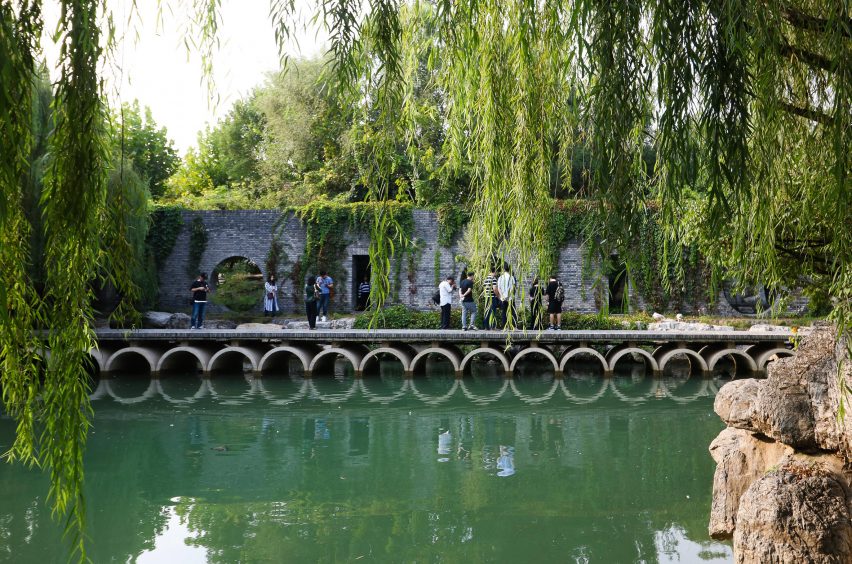
As part of the architectural project for the museum, Dong also created a landscaped garden featuring contrasting dark brick that is used to form pathways, walls and seating areas.
Architectural photographer Yueqi Jazzy Li visited the museum and told Dezeen that he was impressed by the way the uniform use of brick creates a cohesion and simplicity that contrasts with the surrounding shanty shops.
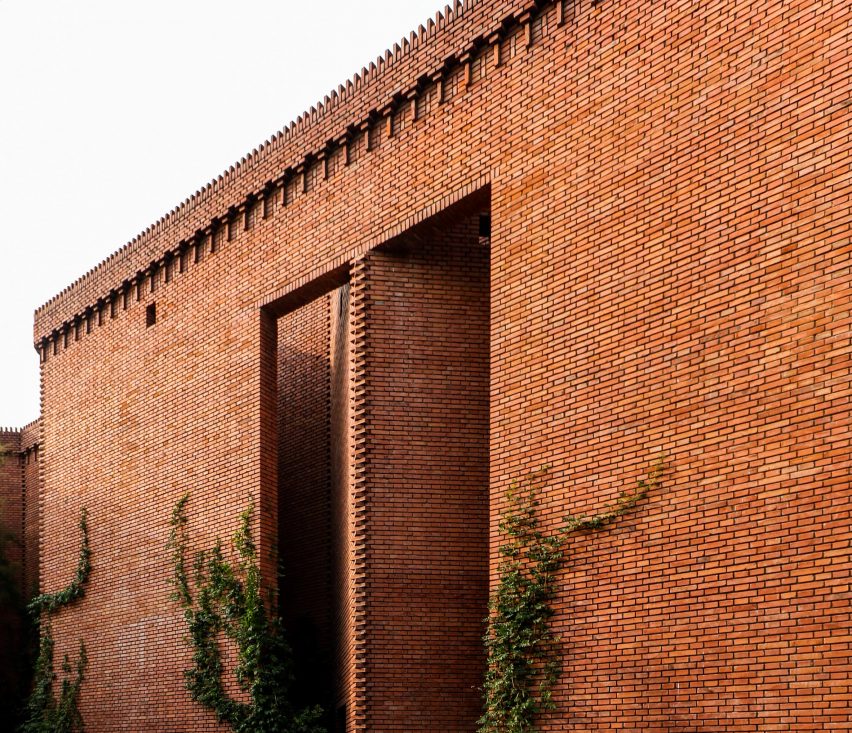
"Once inside the museum compound, it is clear that this is about a pure celebration of masonry architecture and garden making," Li said.
"Shooting the various indoor and outdoor spaces of the museum, it's hard not to marvel at the architect's ability to create richness and drama in seemingly minute and confined areas."
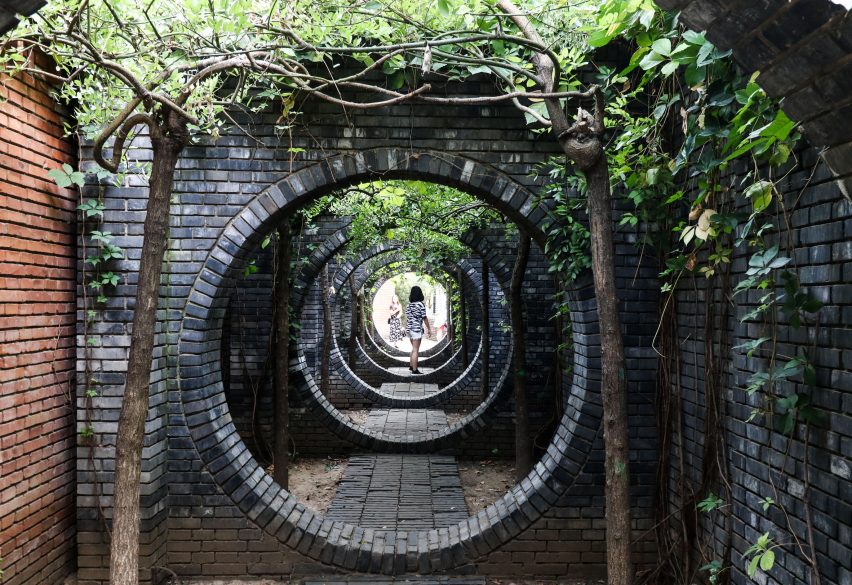
Red brick is used for walls, floors and staircases throughout the museum building, with the facades incorporating geometric perforations and narrow windows that help to control the levels of light and air reaching the interior.
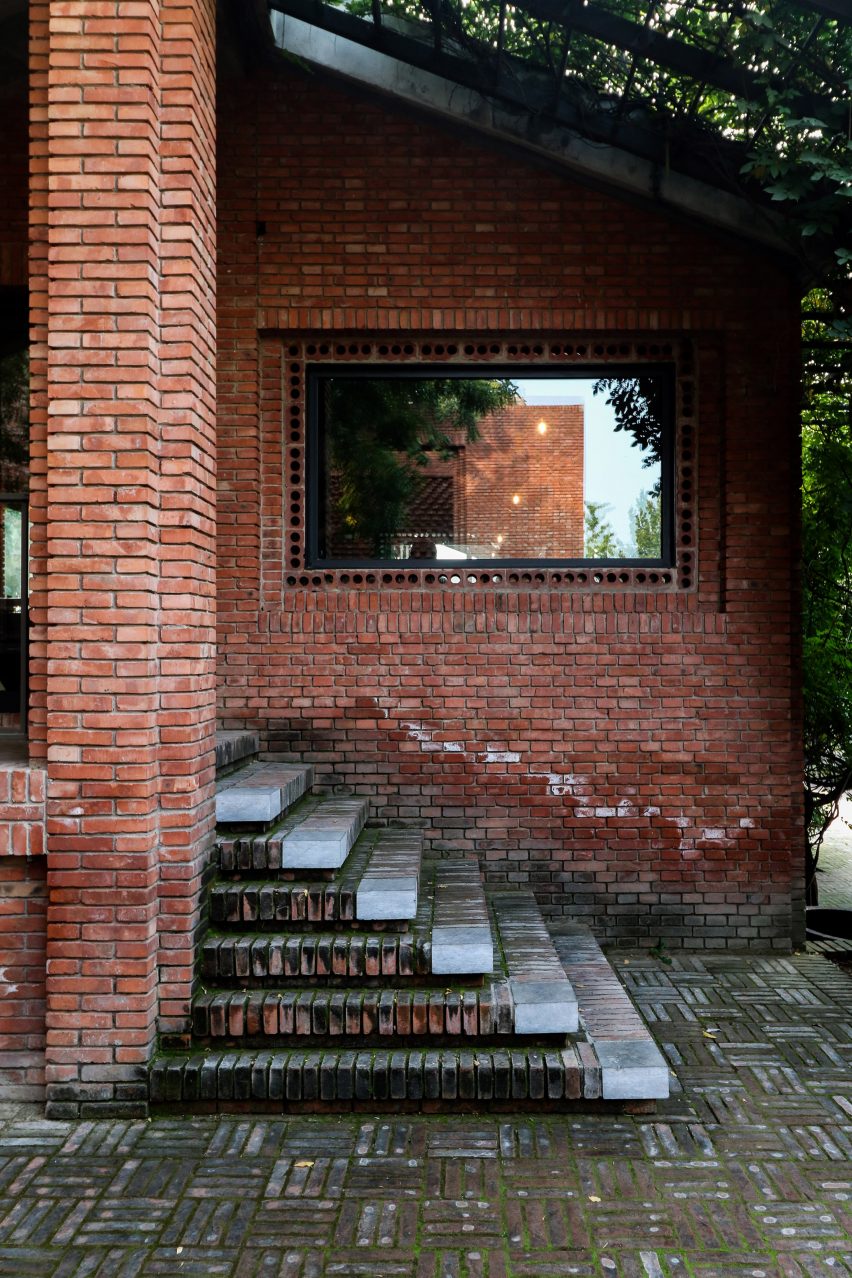
The brick combines with concrete that is left exposed to showcase the underlying structure. Concrete is also applied externally to form seating and elevated walkways, while internally it can be seen in the ceiling slabs and rafters of a top-floor gallery space.
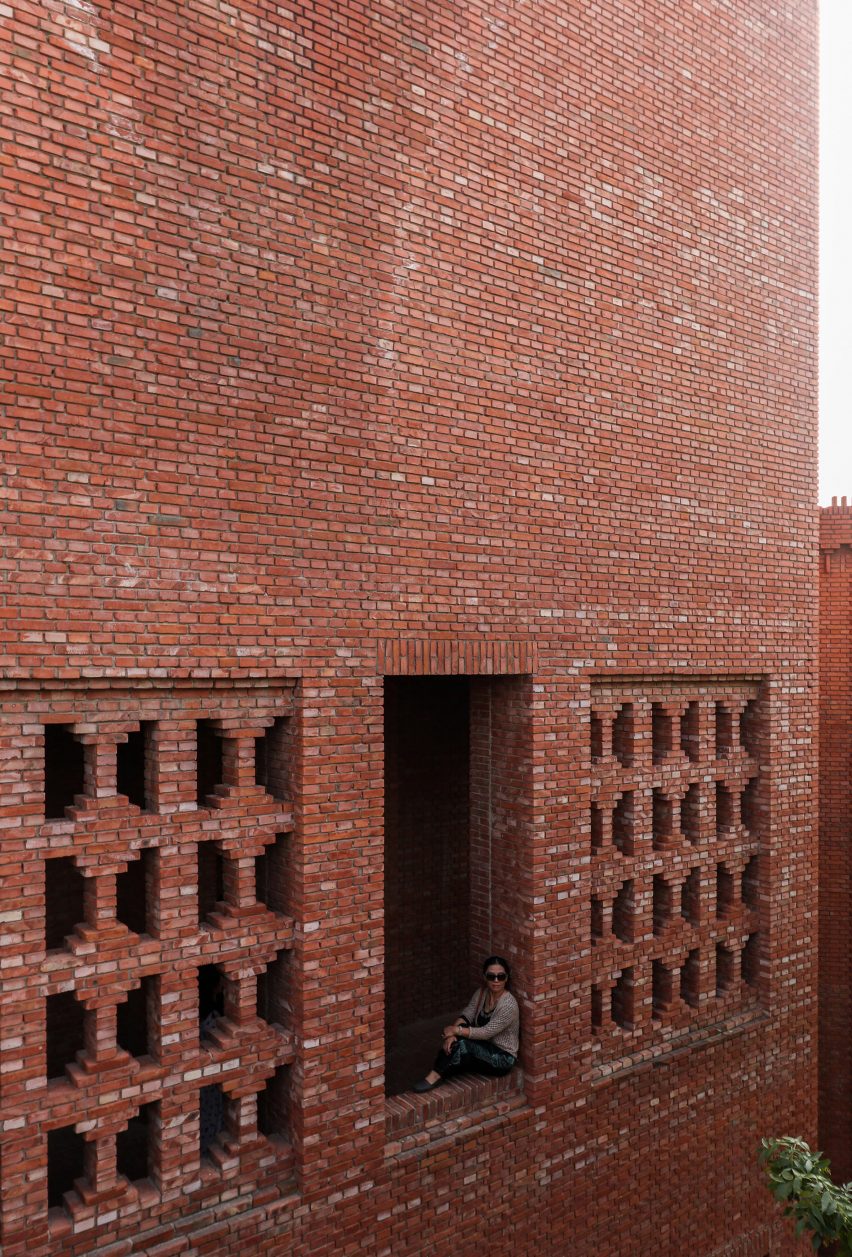
A circular communal area illuminated from above by a skylight is overlooked by a balcony on the level above and is surrounded by steps of varying heights that can be used for seating.
The playful gardens that extend the visiting experience beyond the walls of the museum reference the principles used to lay out traditional Chinese gardens.
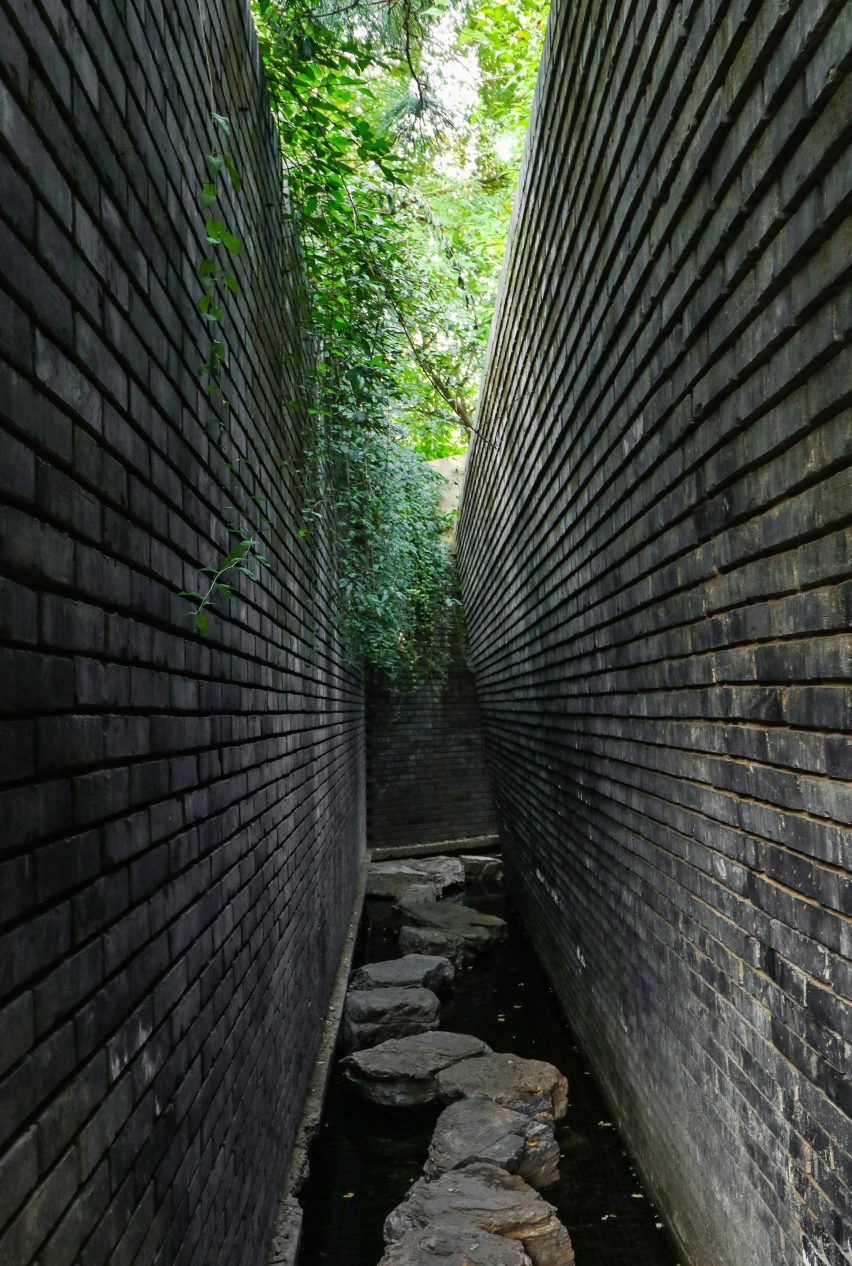
The outdoor spaces include a stepped seating area, a set of stepping stones leading across a narrow pond, and a row of walls punctured by circular openings that allow visitors to look or walk through.
"The museum draws a mixed crowd from all walks of life," said Li. "With spaces so infinite and textures so stimulating, small children, teenagers, adults and senior citizens all seem to enjoy their own moments of hide and seek, romantic stroll, or zen-like respite."
Among the architectural projects photographed by Yueqi Jazzy Li are the "pixelated" forms of the Guardian Arts Center by Büro Ole Scheeren and Tadao Ando's Shanghai Poly Grand Theatre.